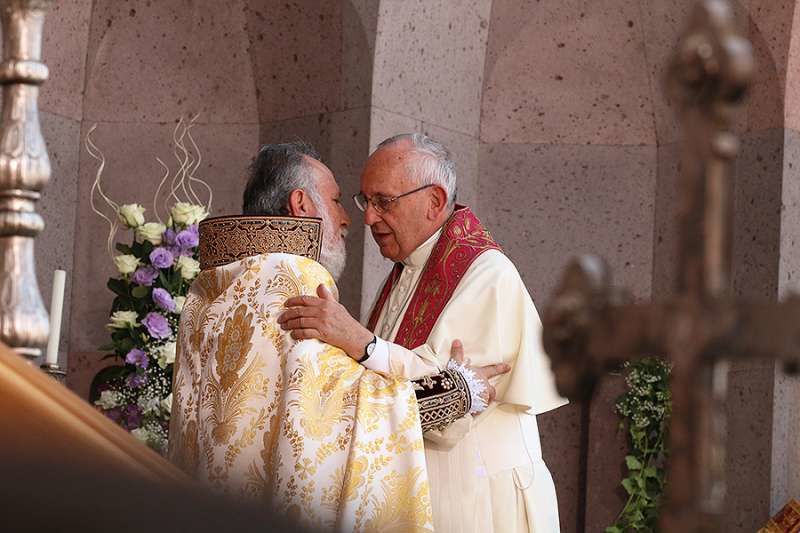At the end of Pope Francis’ visit to Armenia in June 2016, the pope was given a small statue of St. Gregory of Narek, a gift from Armenia’s President Serzh Sargsyan.
rn
rn“This is a present from the Armenian people, and we hope that one day a statue of St. Gregory of Narek will be installed in the Vatican,” he said.
rn
rnPope Francis responded: “I do like both the statue and the idea.”
rn
rnThe Armenian president’s hope will come to fruition April 5, when a large replica of the statue given to the pope will be installed at the Vatican gardens, in the presence of the president, Catholicos Karekin II, who is head of the Armenian Apostolic Church II, along with other Armenian dignitaries.
rn
rnMikayel Minasyan, Armenian ambassador to the Holy See, stressed to CNA the importance of the event.
rn
rn“St. Gregory of Narek,” he said, “is a bridge. He is the bridge between the Armenian Church and Catholic Church. He is a bridge between our two realities, and very importantly, he’s a bridge two worlds: the Armenian world and the Western world. He is a bridge between East and West. He is bridge between land and sky.”
rn
rnAn Armenian monk, theologian and poet of the 10th century, St. Gregory of Narek is venerated as a saint by the Catholic Church and the Armenian Apostolic Church, the Armenian national Church of Eastern Orthodoxy. It is one of the most ancient Churches of the world — Armenia was the first nation to proclaim itself Christian — and tradition holds that it was founded by the missions of the apostles Bartholomew and Thaddeus.
rn
rnPope Francis proclaimed Gregory of Narek a Doctor of the Church during an April 2015 Mass for the centenary of Armenian genocide.
Armenia, a country of nearly 3 million, is situated between Turkey, Iran, and Georgia, in the South Caucasus region of Eurasia.
rn
rn“St. Gregory of Narek is the author of the spiritual constitution of Armenia and the Armenian people. He is the symbol of our culture, which is, at one time, an Armenian, international and Christian culture,” Ambassador Minasyan told CNA.
rn
rnThe ambassador said that “St. Gregory of Narek is a real ecumenical doctor of the Church, since he was not a Catholic and has never been a member of the Roman Catholic Church.”
rn
rnHe added that “St. Gregory of Narek is the symbol of the ecumenism of blood, and the symbol of our destruction and genocide, since even the Narek monastery, where he lived, was destroyed, as was as his tomb, during the Armenian genocide.”
rn
rnMinasyan said that the installation of the statue seems like a piece of Armenia is placed in the Vatican, because “St. Gregory of Narek is very present in the daily life of Armenian people, and this is for real. His ‘Book of Lamentations’ is still used as a book to cure sick people, it is in every hospital, and is used not only as a spiritual medicine, but also as a medicine of the body.”
rn
rnThe installation of the statue also symbolizes the impact of diplomatic relations between Armenia and Holy See, which were opened 25 years ago.
rn
rn“Our diplomatic relation are 25 years old and, at the same time, 1700 years old, because it is not just about the relations between the Holy See and the Republic of Armenia, but also between the Armenian world and the Catholic world,” Ambassador Minasyan said.
rn
rnThis is the reason why, he said, “Armenia will not just be represented by its president, but also by the two Catholicos and by the Armenian Catholic Patriarch, Krikos Bedros XX.”
rn
rnThe ambassador added that “bilateral relations are not just about Armenia, but all the Christians in the Middle East. Our nation lived a diaspora, our country lives everywhere. But our country is above all in the Middle East, and Armenian are the living witnesses of the Middle East’s dechristianization, and both Holy and Armenia are working together to counter that.”

